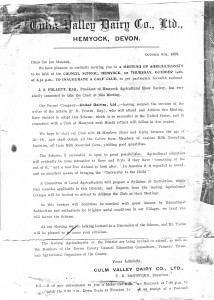 This letter was sent out to local farmers to invite them to a meeting to discuss the formation of a calf club. Less than two weeks later the calf club had been formed.
This letter was sent out to local farmers to invite them to a meeting to discuss the formation of a calf club. Less than two weeks later the calf club had been formed.
Young Farms – Calf Club
Peter Harrison talks to the History Group
Peter Harrison entertained the History Group at the September Thursday meeting on the history of building materials including bricks, clay tiles and terracotta. The Italian specialists on terracotta who were very active in England pre 1500 were all sent packing when our links withRome ended in 1534. The archaeological dig at Churchills which unearthed a Mediaeval Pottery Factory perhaps benefited from this precursor of the English Defence League in the shape of Henry VIII. When brick buildings became fashionable, the older wooden frame buildings were then covered in overlapping thin tiles that made them look brick built. We have always had a fashionable approach to architecture and building designs, importing techniques and materials from around the world. Our innovative approach has now resulted in the many successful architectural practices in the UK winning contracts all over the world.
Peter presented many examples of our building techniques used in previous ages by showing slides of many of our more famous buildings around the country. Here in the South West we have a rich heritage of Country Houses using different building styles. One of these, EscotPark, held a Heritage Day recently when Mark Cox, who has spoken at our monthly meeting, had created a full size Iron Ore Furnace using Iron Ore and charcoal from the Blackdown Hills. Escot have a Saxon village laid out in the grounds with examples of handicraft from this era being worked on.
Whitehall Railway Halt.
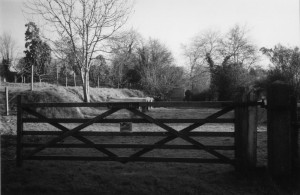 Whitehall Railway Halt today, the track has long gone but the remains of the Halt platform can be seen on the left beyond the gate.
Whitehall Railway Halt today, the track has long gone but the remains of the Halt platform can be seen on the left beyond the gate.
The last goods train leaving Hemyock station.
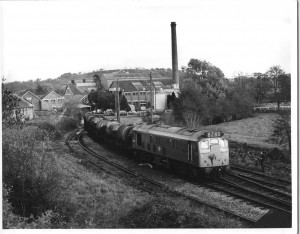 The last train to leave Hemyock, a diesel engine No. 8Z 80. 31st October 1975.
The last train to leave Hemyock, a diesel engine No. 8Z 80. 31st October 1975.
The remains of Hemyock Station 1975.
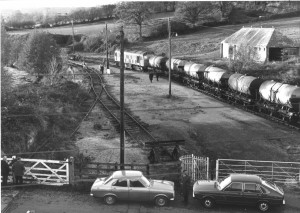 An elevated view of the remains of Hemyock Station in 1975. The Station building has been demolished. The building seen on the right was once a cafe. The kissing gate in the foreground and the tracks have now long gone.
An elevated view of the remains of Hemyock Station in 1975. The Station building has been demolished. The building seen on the right was once a cafe. The kissing gate in the foreground and the tracks have now long gone.
Culm Valley rail line 1963.
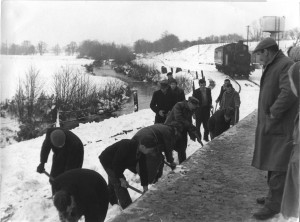
Clearing the line of snow in 1963.
Hemyock Station 1950.
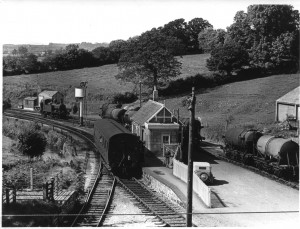 An excellent elevated view of the station in the 1950s The track on the extreme left crossed the road and was used to deliver coal to the factory and to collect milk powder. The other track on the left only ran a few more feet into buffers. The track on the right also crossed the road and was used for milk collection.
An excellent elevated view of the station in the 1950s The track on the extreme left crossed the road and was used to deliver coal to the factory and to collect milk powder. The other track on the left only ran a few more feet into buffers. The track on the right also crossed the road and was used for milk collection.
Engine 1466.
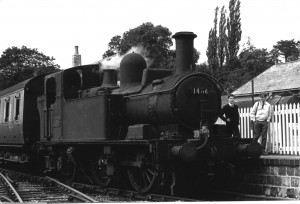 Engine 1466 with a couple of admirers in the early 1960s
Engine 1466 with a couple of admirers in the early 1960s
The arrival of a passenger train.
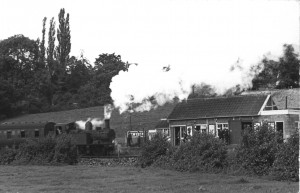 A later post card view showing the arrival of a passenger train at the station.
A later post card view showing the arrival of a passenger train at the station.